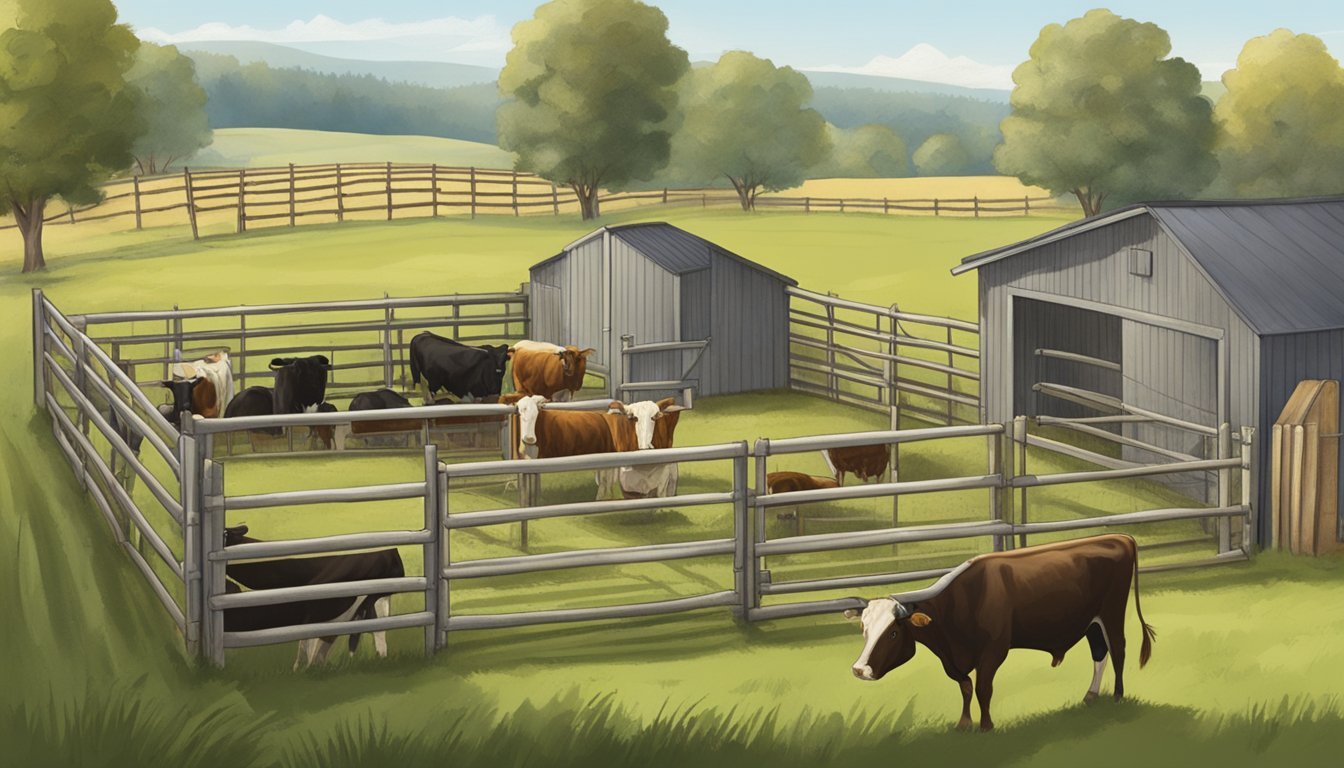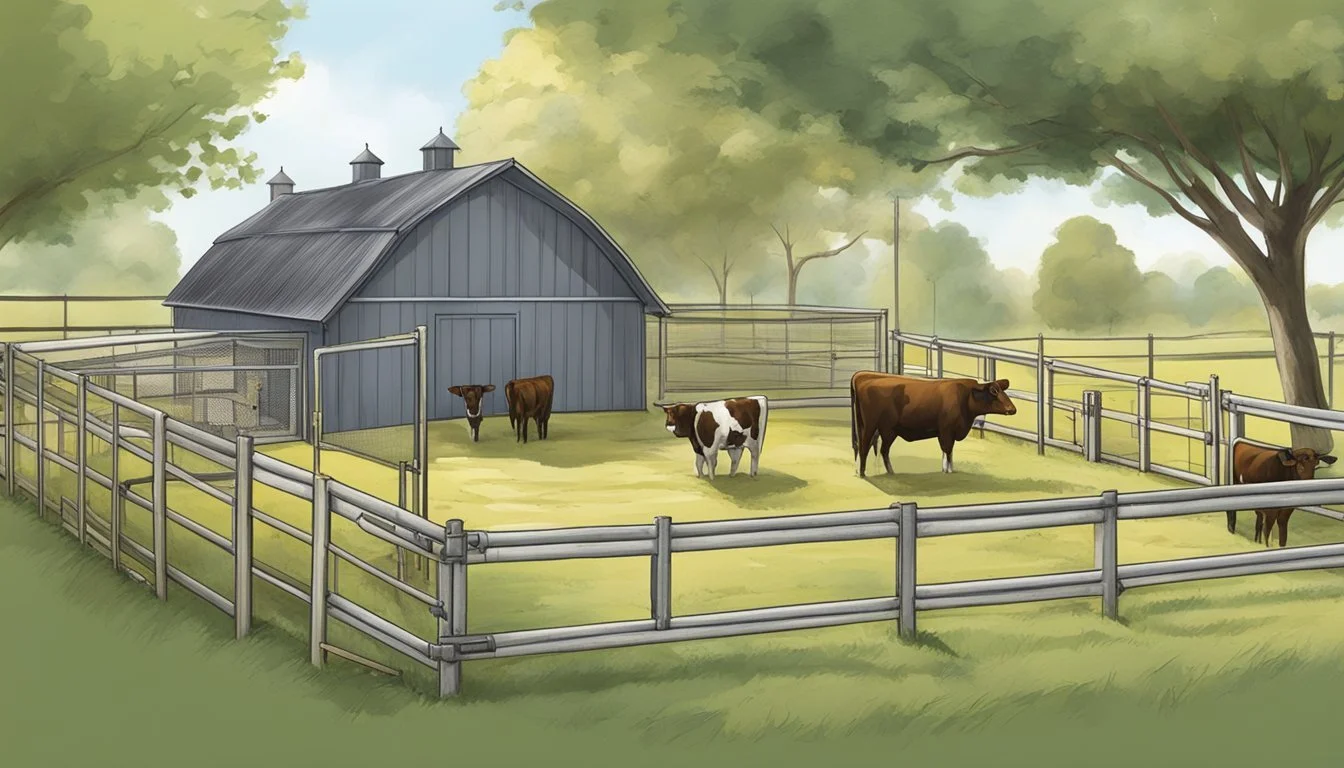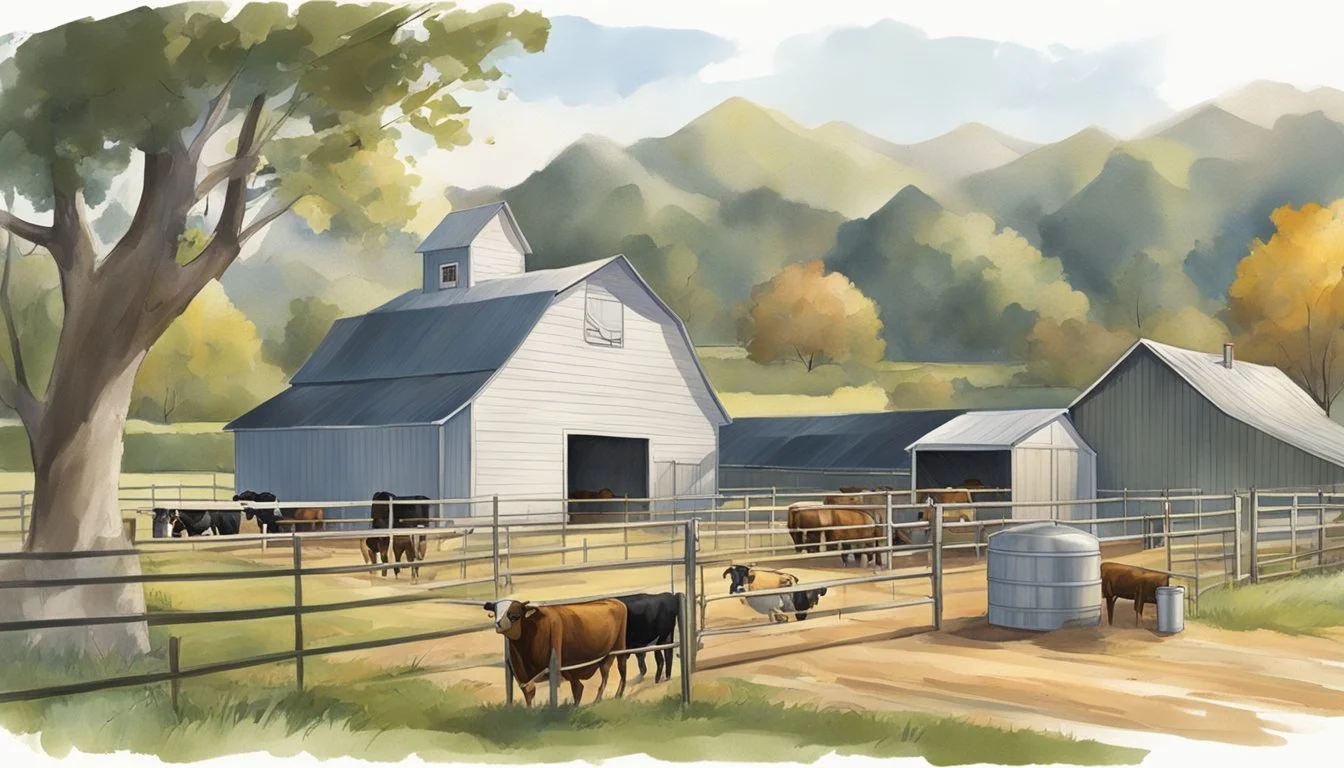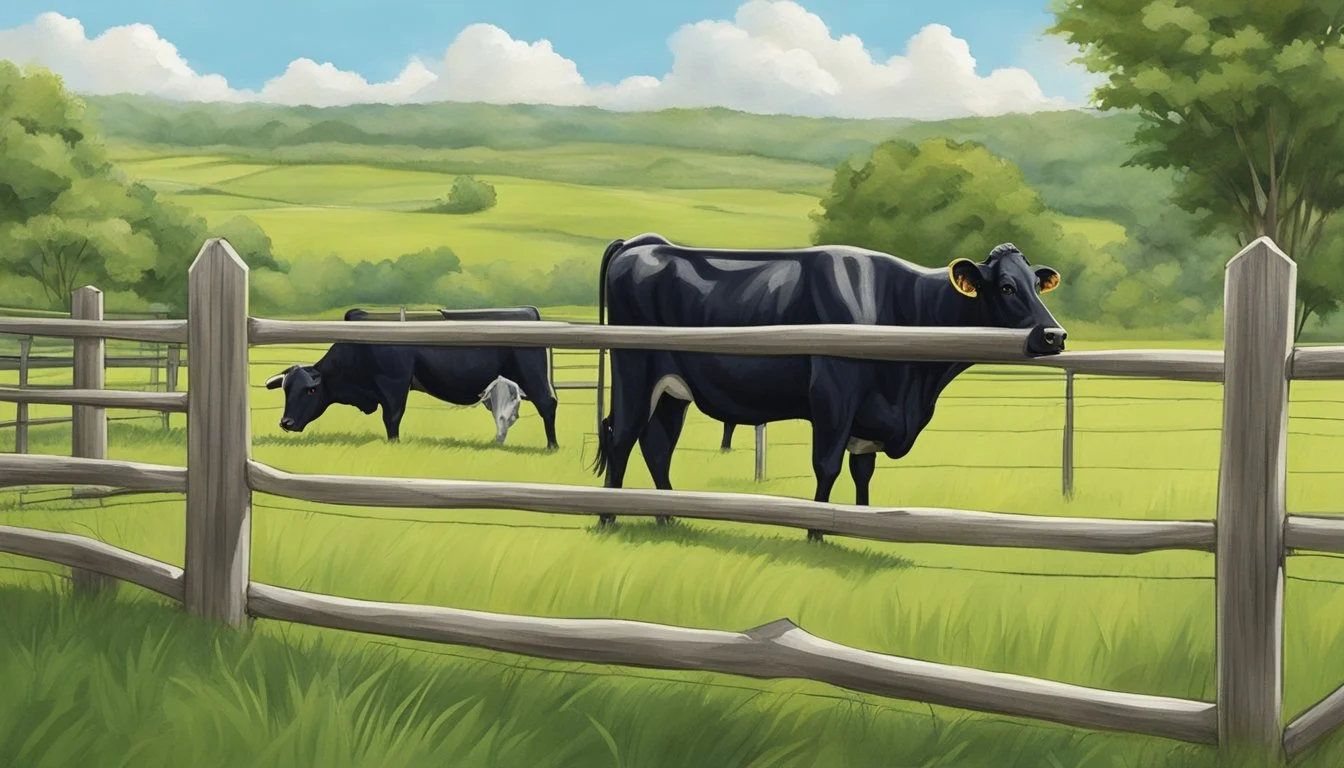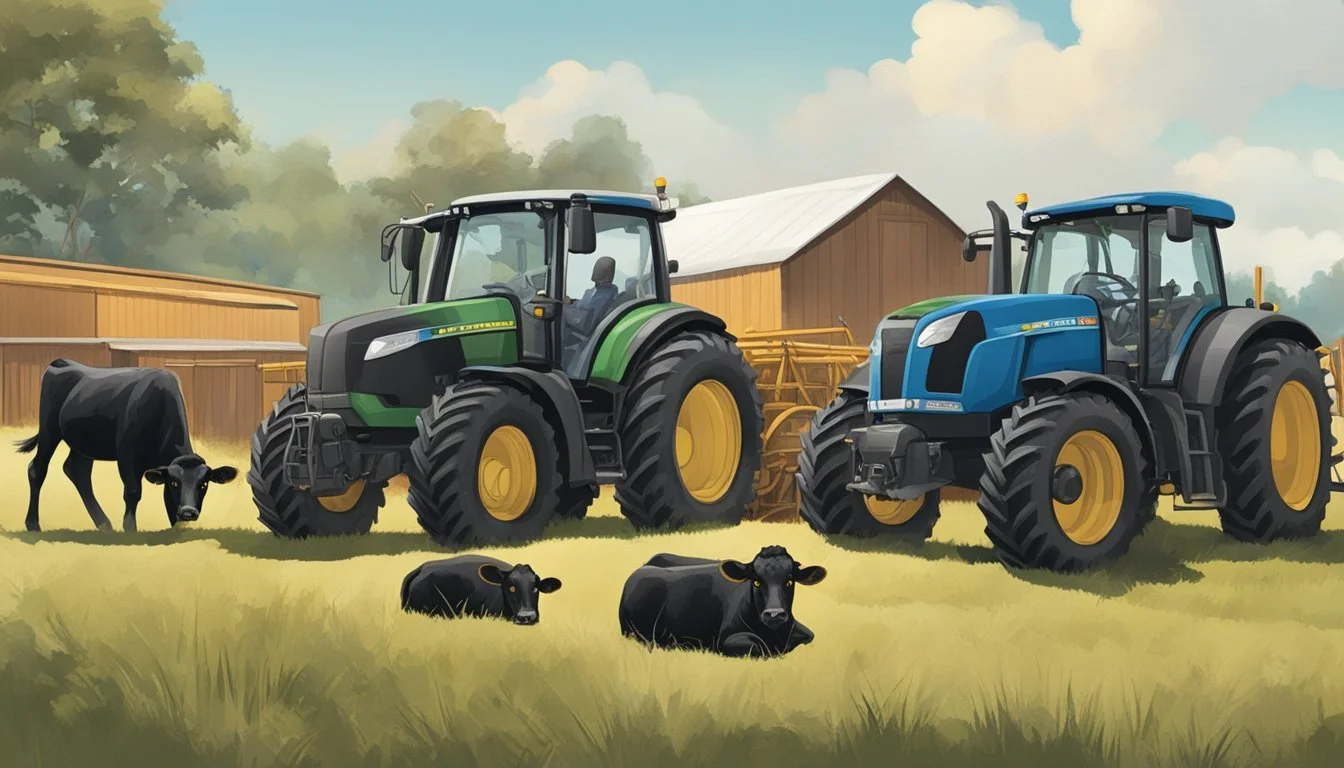Essential Equipment for Managing Dexter Cattle on a Small Farm
The Must-Have Tools and Supplies
Dexter cattle are a popular choice for small farm operations, prized for their smaller size, dual-purpose nature (providing both meat and milk), and generally docile temperament. As a breed that thrives on pasture and can be supplemented with grain, they are well-suited to diverse climates and farm sizes. Managing these cattle efficiently requires a selection of key equipment that ensures their health, facilitates daily tasks, and maintains the integrity of the farm.
Essential equipment for the care of Dexter cattle includes sturdy fencing to contain the animals and protect them from predators. A proper cattle handling system, complete with a squeeze chute and headgate, is critical for safely performing routine health checks, administering medications, and carrying out other management tasks. Additionally, adequate shelter and water systems are fundamental to providing a comfortable and healthy living environment for Dexter cattle.
For pasture maintenance and feed management, a compact tractor can be highly beneficial, especially when equipped with a front-end loader for moving hay and a box blade for leveling ground. The selection of tools and equipment enables small farm owners to maintain a productive environment where Dexter cattle can thrive, ensuring a prosperous and sustainable farming operation.
Understanding Dexter Cattle
Dexter cattle are a versatile and hardy breed, well-adapted for small-scale farming. Originating from Ireland, Dexters are one of the smallest true breeds of cattle known for their easy temperament and variety of colors.
History and Origin
Dexter cattle trace their roots back to the southern regions of Ireland, where they have been raised since the early 19th century. They are one of the smallest true breeds of cattle, originally bred by small landholders and often referred to as the "poor man's cow" due to their adaptability and economical upkeep.
Physical Characteristics
Size: Dexters are notably compact, with cows standing between 36-44 inches tall and weighing up to 750 pounds. Bulls are slightly larger but maintain the breed's characteristic smaller size.
Color: They predominantly display solid colors of black, red, or dun without extensive white markings, though some white is permissible under the belly and on the udder according to breed standards.
Breed Variations: Typical Dexters are either short-legged or non-short, affecting their overall stature, and while originally horned, many are now naturally polled (without horns) due to selective breeding. The breed can also carry a gene for chondrodysplasia, a form of dwarfism, which should be managed with informed breeding practices.
Temperament and Behavior
Dexter cattle are valued for their gentle temperament and friendly personality, making them suitable for smaller farms and those with less experience in cattle handling. They show adaptability to various climates and can thrive in diverse farming practices, whether it is grazing on pasture or supplementing with grain.
Breed Standard and Variations
Breed standards for Dexter cattle emphasize their utility as a dual-purpose breed for both milk and meat production. Desirable traits include a healthy conformation, good maternal instincts, and efficient feed conversion, aligning with their historical role on small Irish farms. Dexters come in two main variations based on leg length, but all should conform to the standard of smaller size, solid colors, and a balanced physique without white markings, aside from the exceptions noted above.
Essential Dexter Cattle Management
Efficient management of Dexter cattle on a small farm encompasses a well-planned approach to feeding, health care, breeding, and housing, ensuring the welfare and productivity of the herd.
Feeding and Nutrition
Dexters are known for their ability to thrive on pasture-based diets, making them excellent for grass-fed systems. Offering a balanced diet is crucial for milk production and overall health. They can be sustained on:
Pasture: High-quality grasses for foraging during the grazing months.
Hay: Stored for winter feeding to maintain nutrition when pasture is not available.
Grain: Optionally supplemented for enhancing butterfat content in milk or for additional energy.
Proper nutrition is vital for the lifespan and productivity of Dexter cattle.
Health and Veterinary Care
Regular health check-ups by a veterinarian ensure that the cattle are free from diseases and are well-cared for. Vaccinations, deworming, and handling any signs of illness promptly are essential components of Dexter cattle care. Special attention should be given during calving to assist heifers if necessary.
To maintain robust health, farmers should focus on:
Routine veterinary exams
Emergency care plans
Proper record-keeping of health data
Breeding and Genetics
Selective breeding in Dexter cattle can enhance beneficial traits such as milk quality, temperament, and adaptability to harsh weather conditions. Farmers need to understand:
Genetic traits: Selecting bulls and heifers with desirable characteristics.
Breeding schedules: Timed to ensure the health of the mother and the best chance of survival for calves.
Managing a bull for a small herd requires careful consideration of safety and genetics.
Housing and Shelter
Dexter cattle require adequate shelter to protect them against extreme weather conditions. A robust and safe shelter should provide:
Protection from elements: Shielding cattle from excessive heat, cold, and precipitation.
Dry bedding: To prevent hoof issues and other health problems.
Space: Enough room for the cattle to rest comfortably.
Structures must be well-ventilated yet insulated enough to maintain a temperate environment within.
Farm Infrastructure for Dexters
Proper infrastructure ensures the well-being of Dexter cattle and the efficiency of farm operations on a small homestead. Specific equipment and facilities are instrumental in managing these hardy animals efficiently.
Fencing and Security
For small farms and homesteads keeping Dexter cattle, robust fencing is crucial to ensure the security of the livestock and prevent any escapes. A commonly used system is:
Electric fence: A reliable electric fencing system can be invaluable in containing Dexter cattle effectively. The setup generally includes:
Energizer: To power the electric lines.
Posts: Spaced appropriately for structural integrity.
Wire or Tape: Multiple strands to deter climbing or pushing through.
A minimum space requirement per Dexter is also important to maintain animal welfare and farm sustainability.
Equipment and Tools
Every small farm with Dexter cattle should be equipped with the following essential equipment and tools:
Tractor: A compact tractor can greatly increase efficiency for tasks such as mowing, tilling, and moving heavy loads.
Hand tools: A selection of hand tools, including a circular saw and reciprocating saw, is needed for routine maintenance and construction on the farm.
Transport: A pickup truck can be utilized for a variety of chores, from hauling feed to transporting materials around the farm.
A comprehensive list of hand tools and equipment should be maintained for regular checks and maintenance.
Handling and Transportation
To manage and transport Dexter cattle, specific facilities and vehicles are necessary:
Loading Chute: Designed for the smaller size of Dexter cattle for efficient and stress-free loading.
Trailer: A durable trailer compatible with the pickup truck is essential for safe and secure cattle transportation.
ATV: An all-terrain vehicle may be beneficial for moving quickly and efficiently around the farm.
It's important that equipment used for handling and transportation is kept in good condition to ensure the safety and well-being of both the cattle and farm operators.
Productivity of Dexter Cattle
Dexter cattle are renowned for their versatility and efficiency as dual-purpose animals. They are capable of producing quality meat and milk, while also offering additional byproducts for farm use.
Milk Production
Dexter cattle are esteemed for their milk quality, which tends to have a higher butterfat content compared to average dairy cattle. This rich milk lends itself well to the production of butter and cheese. While not the highest producers in terms of volume, Dexters can yield between 1.5 to 2.5 gallons of milk per day.
Beef Production
When it comes to beef production, Dexters provide meat with excellent marbling, contributing to a tender texture and a rich flavor. These cattle are efficient in converting feed into meat, and a mature Dexter can produce approximately 400 pounds of beef. The Dexter beef quality is high, whether grain-fed or grass-finished, with grain-finished steers yielding about 60 percent of their live weight in meat and grass-finished steers about 55 percent.
Byproducts and Other Uses
Aside from dairy and beef, Dexter cattle contribute various byproducts. Their manure is a valuable addition to compost piles for organic farming. Furthermore, Dexter cattle have historically been used as oxen for small-scale plowing and transport due to their strength and manageable size.
Climate Considerations
When managing Dexter cattle on a small farm, understanding the impact of climate on livestock is crucial. Certain equipment will be essential to ensure the health and productivity of the animals in varying climates.
Adaptability to Environments
Dexter cattle exhibit a high degree of adaptability to various environments. This breed is equipped with a dense coat that provides insulation, allowing them to thrive in cooler climates, such as in Alaska. Conversely, their short stature and lighter body mass make them well-suited to warmer climates like Florida, where increased heat dissipation is a benefit.
Insulation Needs: For colder climates, additional shelter with insulation may be required.
Cooling Solutions: In hot climates, providing shaded areas and sufficient water for evaporative cooling is essential.
Challenges in Extremes
Despite their adaptability, Dexter cattle can face challenges in extreme weather conditions. Farm managers must be prepared with appropriate equipment to mitigate risks.
Harsh Winters:
Heavy-duty water heaters to prevent freezing.
Windbreaks or covered housing to protect against cold winds and snow.
Intense Summers:
Fans or misting systems to manage heat stress.
Ample access to freshwater to prevent dehydration.
In any extreme, regular monitoring of climate conditions and livestock behavior is vital to respond rapidly to the needs of Dexter cattle.
Benefits and Challenges
Raising Dexter cattle on a small farm offers a distinctive set of advantages and challenges that potential owners should carefully evaluate. These aspects can impact the management, economic viability, and overall satisfaction of a homesteader's experience with this cattle breed.
Advantages of Raising Dexters
Dexter cattle stand out with their compact size, making them well-suited for small acreages. They are a versatile breed, often used for both meat and milk production. A typical Dexter cow is known for its long lifespan and hardy nature, which can translate to lower health-related costs. The breed's manageability is a major benefit for novice and experienced farmers alike.
Compact size: Dexters require less space than larger breeds.
Versatility: Provide both quality milk and meat.
Longevity: Their lifespan can lead to extended productivity.
Potential Drawbacks
One must also consider potential disadvantages when managing Dexter cattle. Their smaller size might mean lesser meat yield compared to larger beef breeds, which might affect a farm's income. Although hardy, their exotic status can make veterinary care and breed-specific advice less accessible. Marketing may present challenges as well, since they are rarer than mainstream cattle, potentially leaving some consumers unfamiliar with the breed.
Less Meat Yield: Smaller proportions might result in lower meat production.
Lesser-Known Breed: May require more effort in marketing and education efforts.
Economic Considerations
From an economic perspective, Dexters can be a wise investment for small-scale operations. The breed can turn in a higher meat conversion rate, impacting the bottom line positively. Homesteaders should strategize around the breed's unique selling points, such as their delicious beef, which is often described as exceeding in quality. Balancing initial investment costs against long-term care expenses is crucial in ensuring a profitable endeavor.
Investment vs. Yield: Assess startup costs against the potential return on meat and milk.
Quality Product: Highlight the high-quality beef and milk to attract premium markets.
By weighing these benefits and challenges, homesteaders can make informed decisions on whether Dexter cattle are the right fit for their small farm operations.
Comparisons with Other Cattle
When comparing Dexter cattle to other breeds, it's essential to consider their size and utility in both beef and dairy production.
Dexters vs Larger Cattle Breeds
Dexter cattle typically weigh between 600 to 1000 pounds, making them significantly smaller than many common cattle breeds. For instance, a mature Holstein can weigh up to 1500 pounds or more, while Hereford and Angus cattle, known for their beef production, can exceed 1200 pounds. The lighter weight of Dexters means they require less space and can be more easily managed on smaller farms. In terms of meat production, Dexter cattle produce a higher yield of meat for their size compared to dairy breeds. They are known for the excellent quality of their beef which has a good marbling texture, ensuring flavorful and tender cuts.
Comparison Table:
Breed: Dexter
Average Weight: 600-1000 lbs
Purpose: Dual-purpose
Breed: Holstein
Average Weight: Up to 1500 lbs
Purpose: Dairy
Breed: Hereford
Average Weight: Over 1200 lbs
Purpose: Beef
Breed: Angus
Average Weight: Over 1200 lbs
Purpose: Beef
Dexters in Dairy Production
In the realm of dairy production, Dexters produce less milk than specialized dairy breeds, such as the Jersey or Holstein cows, which can provide several gallons per day. Yet, the milk of Dexter cattle is typically higher in butterfat content, averaging around 4%, making it richer and well-suited for cheese and butter production. They are considered dual-purpose livestock that can supply both milk and beef, whereas Holstein and Jersey cows are primarily valued for their dairy output.
Milk Production Comparison:
Dexter Cattle:
Milk: High butterfat (around 4%)
Use: Dual-purpose (milk and beef)
Jersey Cattle:
Milk: High milk yield with high butterfat (around 4.8%)
Use: Dairy
Holstein Cattle:
Milk: Very high milk yield with lower butterfat (around 3.5%)
Use: Dairy
Community and Resources
When managing Dexter cattle on a small farm, a network of support and knowledge becomes invaluable. Two key pillars in this network are the American Dexter Cattle Association, which provides a wealth of resources for farm owners, and educational programs that ensure the dissemination of best practices in cattle management.
American Dexter Cattle Association
The American Dexter Cattle Association (ADCA) is the principal entity for Dexter cattle owners in the United States. It plays a crucial role in maintaining breed standards and providing registries for both bulls and cows of varying ages. Members can access:
A comprehensive registry of purebred Dexter cattle.
Resources on best management practices for health and breeding.
Opportunities to connect with other Dexter cattle owners for advice and support.
Education and Outreach
Education in the field of Dexter cattle management is essential for sustainable and efficient farming operations. Resources can be acquired through:
Workshops and seminars: They provide farmers with hands-on experience and valuable insights into the care and breeding of Dexter cattle.
Online resources and literatures: Websites and publications offer guidance on topics ranging from pasture management to feeding protocols.
Community outreach: Local farm groups may facilitate knowledge exchange and offer assistance, especially for new farm owners.
Farmers are encouraged to stay informed about the latest advancements in agriculture related to Dexter cattle to enhance their farm's productivity and animal well-being.


